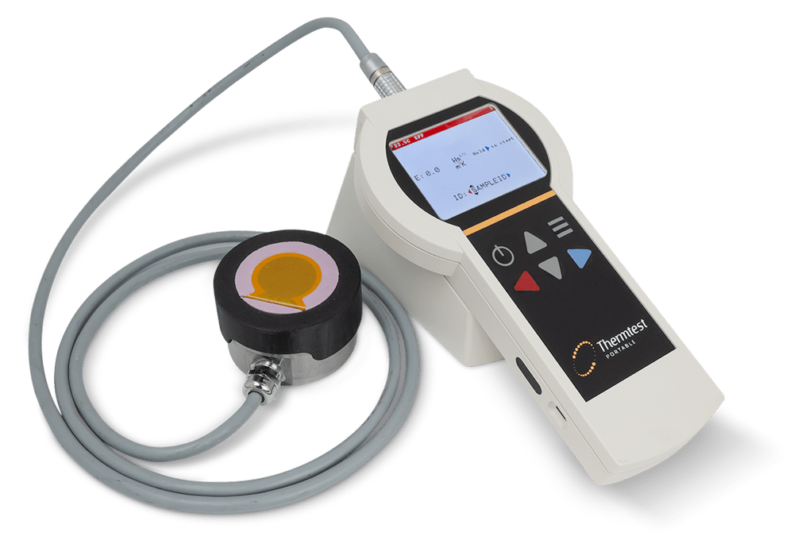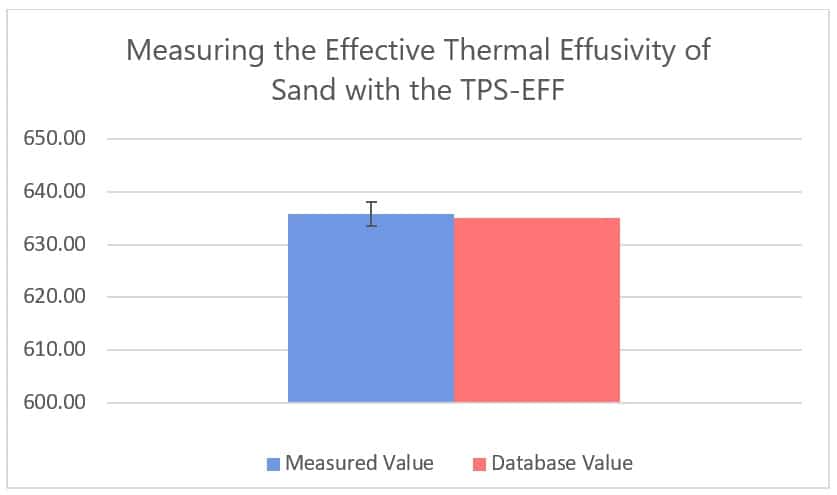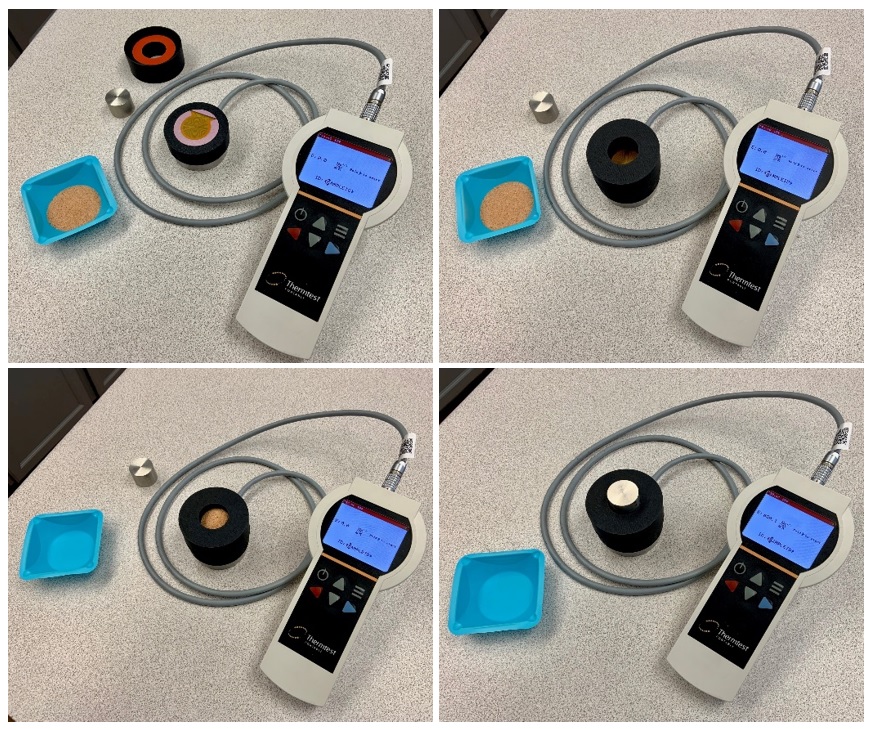The apparent thermal effusivity / thermal effusance (W√s/m2K) of sand was measured using TPS-EFF (Transient Plane Source-Effusivity) and a custom-made sediment reservoir.

Transient Plane Source – Thermal Effusivity Meter
TPS-EFF is a portable thermal effusivity meter for textiles with a thermal effusivity measurement range of 35 to 1700 (W√s/m2K) and a temperature range of -10 ºC to 50 ºC. A single measurement can be set to 2 or 10 seconds in duration. The experiment was conducted in accordance with the ASTM D7984-16 standard of testing method as much as possible, keeping in mind that sediments are not textiles. Due to the robust nature of thermal effusivity as a value, it was deemed worthwhile to attempt to measure the thermal effusivity of sand with this method.
Thermal effusivity is most typically measured to predict how ‘cool’ or ‘warm’ a material feels. It has a square root proportionality to the density, thermal conductivity, and specific heat capacity of the material. Highly dense samples of materials with high thermal conductivity and specific heat capacity values have high thermal effusivity values, and this is also the case the other way around.
In non-solid samples, there are more modes of heat transfer than sole conduction. When other heat transfer mechanisms such as convection and radiation are present in the sample, thermal conductance becomes a more appropriate term than thermal conductivity. This makes thermal effusance or effective thermal efffusivity more appropriate to use over thermal effusivity in the case of these measurements.
In this experiment, a sample of fired sand was measured for thermal effusance / effective thermal effusivity using a TPS-EFF meter and compared to the materials database value, see Figure 1. A test time of 10 seconds was used in the hopes of obtaining a value that minimizes the effect of contact resistance and is more representative of the bulk of the sample. If this is an effective method for measuring the thermal effusance of sand, the value obtained from measurement should be very close to the database value.

Figure 1. A comparison of thermal effusivity values of sand with a touch time of 10 seconds and the value obtained from the Thermtest Materials Database.
The results indicate that the measured value for sand at 635.8 W√s/m2K is indeed very close to the recorded value in the materials database of 635 W√s/m2K. It appears that this is an effective method for measuring the effusivity of soils and sediments.

Figure 2. Measuring the effusance of fired sand with the TPS-EFF. In reading order: 1) TPS-EFF meter. 2) Sand and sediment attachment placed on the sensor. 3) Sample of fired sand placed in the well of the attachment. 4) A weight is applied and the sample is measured.
TPS-EFF has a 5% accuracy and a 2% reproducibility, making it a highly accurate and precise instrument for measuring thermal effusivity of textiles and other materials.